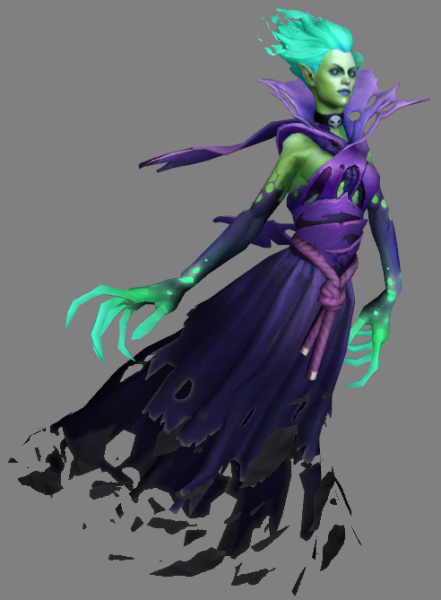Transparent voxels
This is what its coming out like right now:
[attachment=13842:RuinValor 2013-02-23 21-42-37-02.png]
* Use alpha-testing instead of alpha-blending where possible.
* You can do depth-sorting by dynamically creating a new list of indices (in a dynamic index buffer) each frame.
* You can do order-independent transparency (I wouldn't recommend it, it's too expensive on most hardware).
* If you can't do depth-sorting, then what I'd recommend is the Alpha Compositing trick from 'Foliage Rendering in Pure', which results in your grass sprites having soft/blended areas when they overlap with opaque geometry, but hard edges anywhere where they overlap with other grass sprites.
This works by:
-- drawing your opaque scene to render target A.
-- clearing render target B to black.
-- Drawing your grass with additive blending and no depth testing, and a write mask of rgb=false, a=true (so that only the alpha channels are summed).
-- Drawing your grass with depth-testing and alpha-testing (no blending), and a write mask of rgb=true, a=false (so that only the colour channels are written).
-- Alpha blending the texture B over the top of render-target A.
That model looks like it only needs alpha-testing, not alpha-blending, so it won't have any problems to begin withKeep in mind we are trying to get alphas on a model like this
Ah.. well i saw some things behind it, here let me give you a better example:


Added a video so you can see what it looks like more clearly. Should be in 1080p here shortly:
[media]
It looks like simple "sample alpha to coverage". It will give you order independent transparency with antialiasing, but you will have just N levels of transparency, where N equals your (multi)samples count for your framebuffer. Nah I'm not a good teacher, rather see here:
Here is a demonstration with brief description - http://www.humus.name/index.php?page=3D&ID=61
First pass state:-- Drawing your grass with additive blending and no depth testing, and a write mask of rgb=false, a=true (so that only the alpha channels are summed).
-- Drawing your grass with depth-testing and alpha-testing (no blending), and a write mask of rgb=true, a=false (so that only the color channels are written).
descBlendAlphaOnly.RenderTarget[0].IsBlendEnabled = true;
descBlendAlphaOnly.RenderTarget[0].RenderTargetWriteMask = ColorWriteMaskFlags.Alpha;
descBlendAlphaOnly.RenderTarget[0].SourceBlend = BlendOption.SourceAlpha;
descBlendAlphaOnly.RenderTarget[0].SourceAlphaBlend = BlendOption.SourceAlpha;
descBlendAlphaOnly.RenderTarget[0].DestinationBlend = BlendOption.One;
descBlendAlphaOnly.RenderTarget[0].DestinationAlphaBlend = BlendOption.One;
descBlendColorOnly.RenderTarget[0].IsBlendEnabled = false;
descBlendColorOnly.RenderTarget[0].RenderTargetWriteMask = ColorWriteMaskFlags.Red | ColorWriteMaskFlags.Green | ColorWriteMaskFlags.Blue;
This is the result I'm getting:
[attachment=13870:RuinValor 2013-02-24 00-33-06-95.png]
I have no alpha testing on the first pass and the 2nd pass uses this:
if(color.a == 0.0f)
discard;
But the dark outlines against other bits of grass are "correct", simply because your grass texture contains those dark colours in it (i.e. it's an art problem)
If you want smoother edges in the areas where multiple bits of grass overlap, you can use:
//in 1st pass, only use the top 50% of the alpha channel
return saturate(color.a*2-1).xxxx;
//2nd pass, discard at the 50% mark
if(color.a < 0.5f)
discard;//in 1st pass, only use the top 75% of the alpha channel
return saturate((color.a-0.25)/0.75).xxxx;
//2nd pass, discard at the 25% mark
if(color.a < 0.25f)
discard;I added a dark bg for simple testing purposes. I know that when I am making the final one I need to have something near the color tone of the primary color.

Actually scratch that, he said he is using a PNG that i made... the png is here. It has no alpha.... so not sure why that would happen









